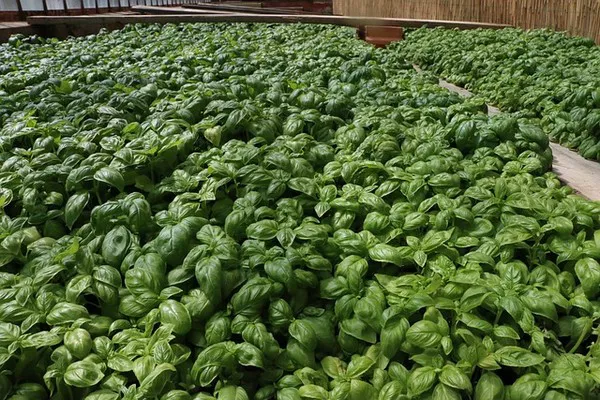Potatoes are one of the most versatile and widely consumed crops worldwide, making them an excellent addition to any home garden. Not only are they relatively easy to grow, but they also provide a bountiful harvest with minimal effort. Whether you’re a seasoned gardener or a novice, this comprehensive guide will walk you through the process of growing potato plants from start to finish.
Choosing Potato Varieties
Before diving into the growing process, it’s essential to choose the right potato varieties for your garden. Potatoes come in a wide range of shapes, sizes, and colors, each with its own unique flavor and culinary uses. Some popular varieties include Russet, Yukon Gold, Red Pontiac, and Fingerling potatoes.
When selecting potato varieties, consider factors such as your climate, available space, and preferred taste. Different varieties have different requirements and characteristics, so choose ones that are well-suited to your specific growing conditions.
Preparing the Soil
Potatoes thrive in loose, well-draining soil with a pH between 5.0 and 6.0. Before planting, prepare the soil by tilling it to a depth of at least 6 inches and removing any weeds or debris. Incorporate organic matter such as compost or aged manure to improve soil structure and fertility.
It’s also a good idea to perform a soil test to determine nutrient levels and make any necessary amendments. Potatoes require ample amounts of potassium, phosphorus, and nitrogen for optimal growth, so be sure to supplement the soil as needed.
Planting Potatoes
Potatoes can be grown from seed potatoes, which are small, whole potatoes or potato pieces that have at least one eye or sprout. To plant potatoes, follow these steps:
1. Chitting: Before planting, allow your seed potatoes to sprout by placing them in a cool, well-lit area for several weeks. This process, known as chitting, encourages faster and more uniform germination.
2. Cutting: If using whole seed potatoes, you may choose to cut them into smaller pieces, ensuring that each piece has at least one eye. Allow the cut surfaces to dry for a day or two before planting to prevent rotting.
3. Spacing: Plant seed potatoes or potato pieces in rows or mounds, spacing them 12-18 inches apart with 2-3 feet between rows. Planting in mounds or ridges helps improve drainage and prevents waterlogging.
4. Depth: Dig a small trench or hole for each potato piece, burying them 3-4 inches deep with the eyes facing upward. Cover the potatoes with soil, leaving a slight depression to hold water.
5. Mulching: Apply a layer of organic mulch, such as straw or shredded leaves, around the base of the plants to conserve moisture, suppress weeds, and regulate soil temperature.
Caring for Potato Plants
Once your potato plants are in the ground, proper care is essential to ensure healthy growth and a bountiful harvest. Here are some key tasks involved in caring for potato plants:
1. Watering: Keep the soil consistently moist but not waterlogged throughout the growing season, especially during dry periods and as the plants begin to flower and set tubers. Avoid overhead watering, as wet foliage can increase the risk of disease.
2. Fertilizing: Potatoes are heavy feeders and benefit from regular fertilization throughout the growing season. Apply a balanced fertilizer high in potassium and phosphorus, following package instructions for rates and timing.
3. Hilling: As potato plants grow, they will produce tubers along underground stems called stolons. To encourage larger yields and protect developing tubers from sunlight, periodically mound soil or mulch around the base of the plants, covering the lower foliage.
4. Weeding: Keep the area around your potato plants free of weeds, which compete for nutrients, water, and sunlight. Regularly inspect the garden bed and remove any weeds by hand or with a hoe.
5. Pest and Disease Management: Monitor your potato plants for signs of pests such as aphids, Colorado potato beetles, and potato leafhoppers, as well as common diseases like late blight and early blight. Employ cultural practices such as crop rotation, proper spacing, and timely removal of infected plants to minimize the risk of pest and disease damage.
Harvesting and Storing Potatoes
Potatoes are typically ready for harvest 70-120 days after planting, depending on the variety and growing conditions. Here’s how to harvest and store your potato crop:
1. Timing: Harvest potatoes when the foliage begins to yellow and die back, usually in late summer or early fall. Wait until the plants have fully matured to maximize tuber size and yield.
2. Digging: Carefully dig up the potatoes using a garden fork or shovel, being careful not to damage the tubers. Dig several inches away from the plant to avoid accidentally piercing or slicing the potatoes.
3. Curing: After harvesting, allow the potatoes to cure in a cool, dark place with good ventilation for 1-2 weeks. This allows the skins to toughen up and any minor cuts or bruises to heal, reducing the risk of spoilage during storage.
4. Storage: Store cured potatoes in a cool, dark, and well-ventilated location such as a root cellar, basement, or pantry. Keep them in a single layer in breathable containers such as paper bags or wooden crates, away from onions and other vegetables that emit ethylene gas, which can cause potatoes to sprout prematurely.
Conclusion
By following these guidelines for growing, caring for, and harvesting potato plants, you can enjoy a plentiful harvest of fresh, homegrown potatoes straight from your garden. With a little time and effort, you’ll soon be savoring the satisfaction of growing your own delicious and nutritious potatoes year after year.


